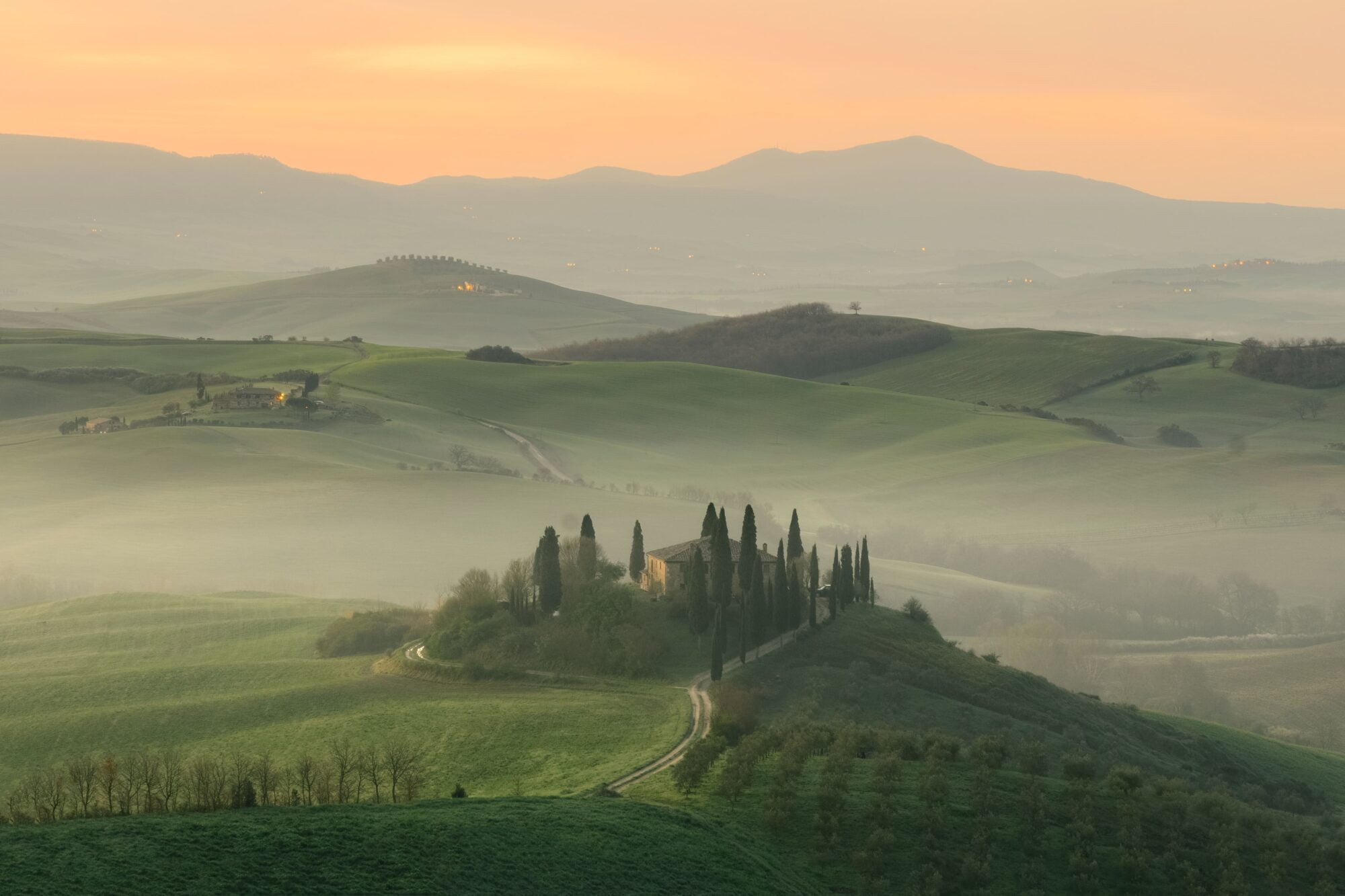Tuscany is undeniably one of the most renowned regions in Italy, and its fame is well-deserved. It captivates with its breathtaking landscapes, rich historical legacy, artistic heritage, and, notably, its world-class wines.
The iconic Tuscany landscape, adorned with rolling hills, vineyards, olive groves, and cypress-lined avenues, has become known all over the world.
Today, our focus is on Tuscany’s wines and wineries. Tuscany for Italy is like Bordeaux for France, producing an impressive array of wines, ranging from everyday wines to world-class exclusives. With hundreds of wineries in Tuscany, we’ll highlight a select few that are truly worth a visit. Let’s explore some of the noteworthy wineries in Tuscany!
Top Wineries to visit in Tuscany, Chianti Region:
About Tuscany Wines

- Chianti Classico: Produced in the Chianti region, Chianti Classico is primarily made from Sangiovese grapes. It is characterized by its bright acidity, cherry flavors, and sometimes, earthy undertones. The Gallo Nero (Black Rooster) on the label indicates Chianti Classico.
- Brunello di Montalcino: Hailing from the town of Montalcino, Brunello di Montalcino is made exclusively from Sangiovese Grosso grapes. This wine is renowned for its complexity, intense dark fruit flavors, and its ability to age gracefully.
- Vino Nobile di Montepulciano: Produced in the Montepulciano region, this wine is primarily composed of Sangiovese grapes. Vino Nobile di Montepulciano is known for its velvety texture, cherry flavors, and a well-balanced profile.
- Super Tuscans: Super Tuscans are a category of wines that break away from traditional Italian winemaking regulations. They often blend Sangiovese with international grape varieties like Cabernet Sauvignon and Merlot, resulting in bold and innovative wines.
- Vernaccia di San Gimignano: A notable white wine, Vernaccia di San Gimignano, is produced in the town of San Gimignano. It features crisp acidity, floral aromas, and citrusy flavors. Vernaccia di San Gimignano was the first Italian wine to receive the Denominazione di Origine Controllata or DOC (Designation of Origin) designation.
- Morellino di Scansano: Originating from the Maremma region, Morellino di Scansano is a red wine primarily made from Sangiovese grapes. It offers a medium to full body with flavors of dark berries, plum, and a touch of spice.
- Carmignano: Carmignano is produced in the area around the town of Carmignano, near Florence. It is a red wine blend that typically includes Sangiovese, Cabernet Sauvignon, and sometimes Cabernet Franc. Carmignano wines are known for their structure, dark fruit flavors, and aging potential.
- Vin Santo: Vin Santo is a traditional Tuscan dessert wine made from dried grapes, often Trebbiano and Malvasia. It is aged for several years, resulting in a sweet, amber-colored wine with notes of dried fruits, nuts, and honey.
Chianti Region Wineries
1. Ricasoli Winery
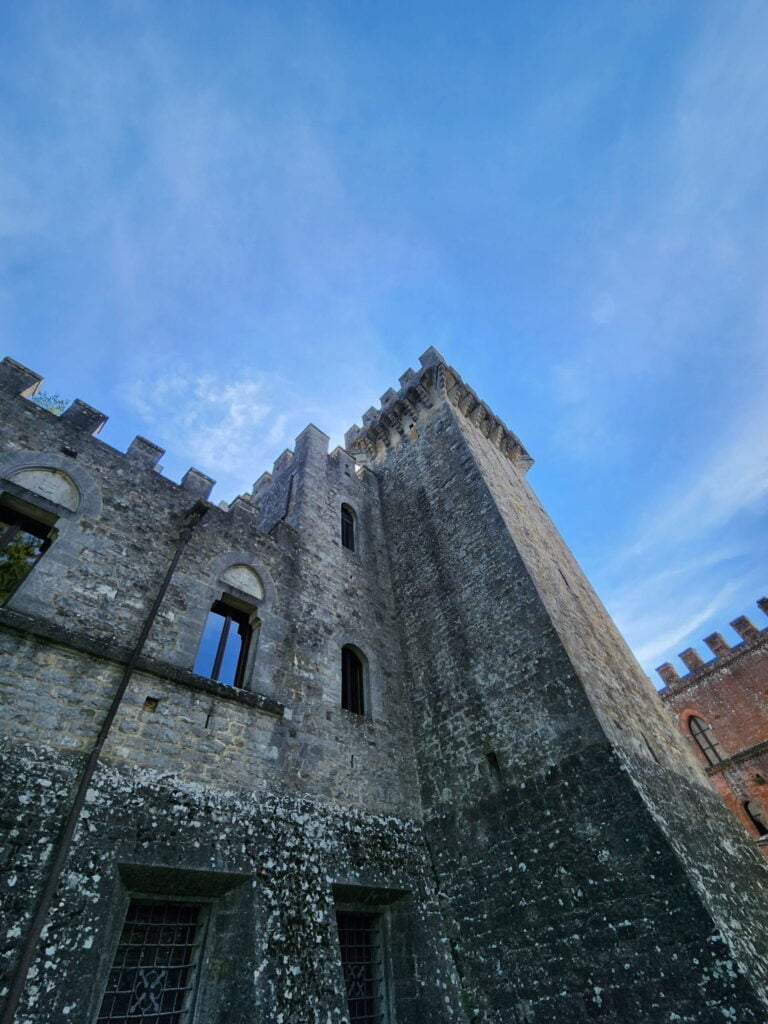
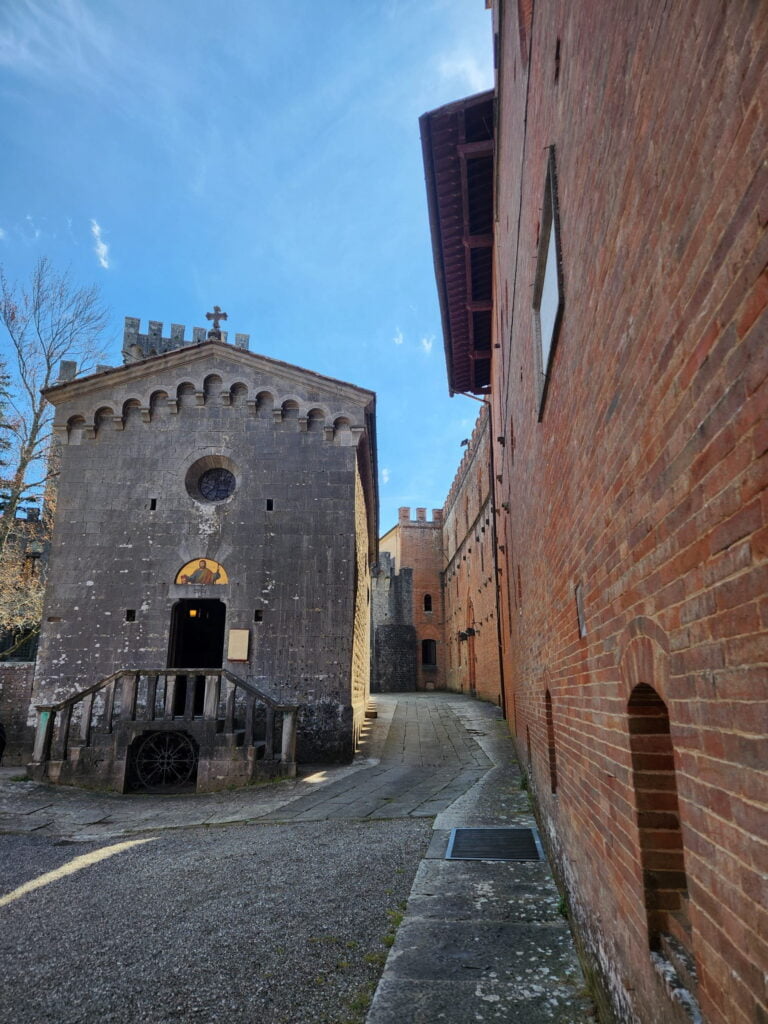
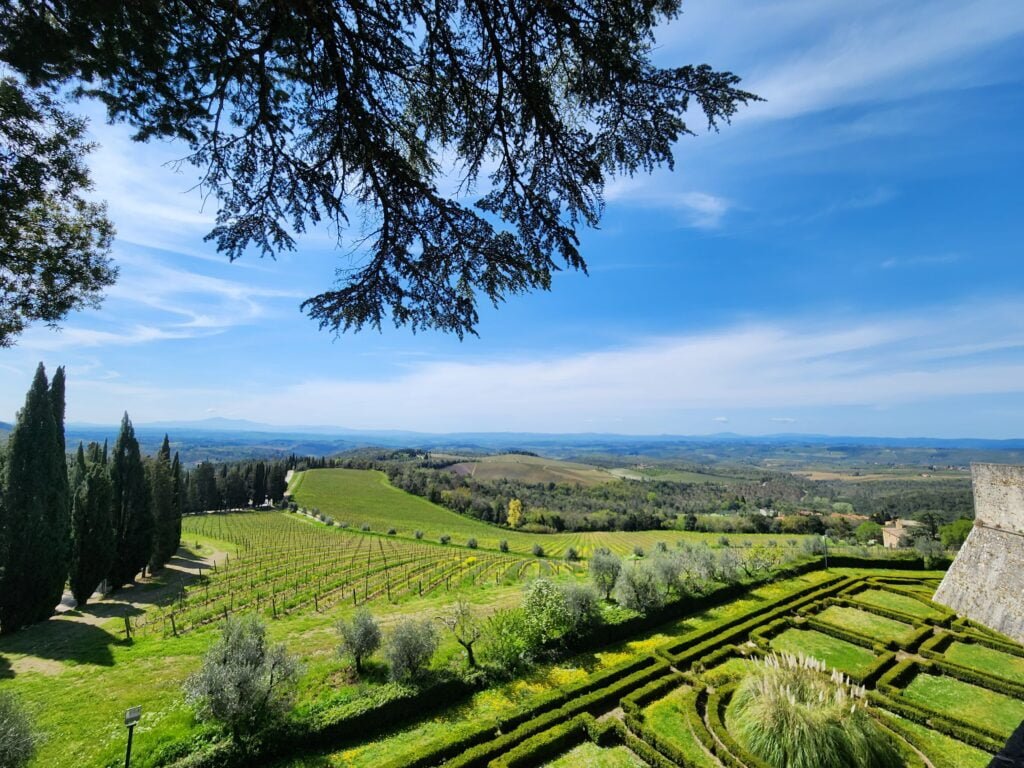

Some of Ricasoli Wines

- Castello Di Brolio Chianti Classico Gran Selezione. Grapes: Sangiovese 100%. It is a ruby red wine, smooth, of balanced acidity with the notes of red berries, leather and oak.
- Brolio Chianti Classico. Grapes: Sangiovese 95% , Colorino 5%. It is a deep ruby red wine with the notes of plum, vanilla, leather and tobacco.
- Brolio Riserva Chianti Classico. Grapes: 100% Sangiovese. It is a dark ruby red wine with the notes of red fruits, cherry, leather and tobacco.
- Casalferro. Grapes: 100% Merlot. It is a dark red fruity wine with the notes of cherry, vanilla and coffee.
- Torricella. Grapes: 100% Chardonnay. It is a yellow gold wine with the notes of citrus, oak and vanilla.
- Castello di Brolio Sanbarnaba. Grapes: 100% Trebbiano. It is a rich yellow wine with the notes of apricot, melon and honey.
2. Tolaini Winery
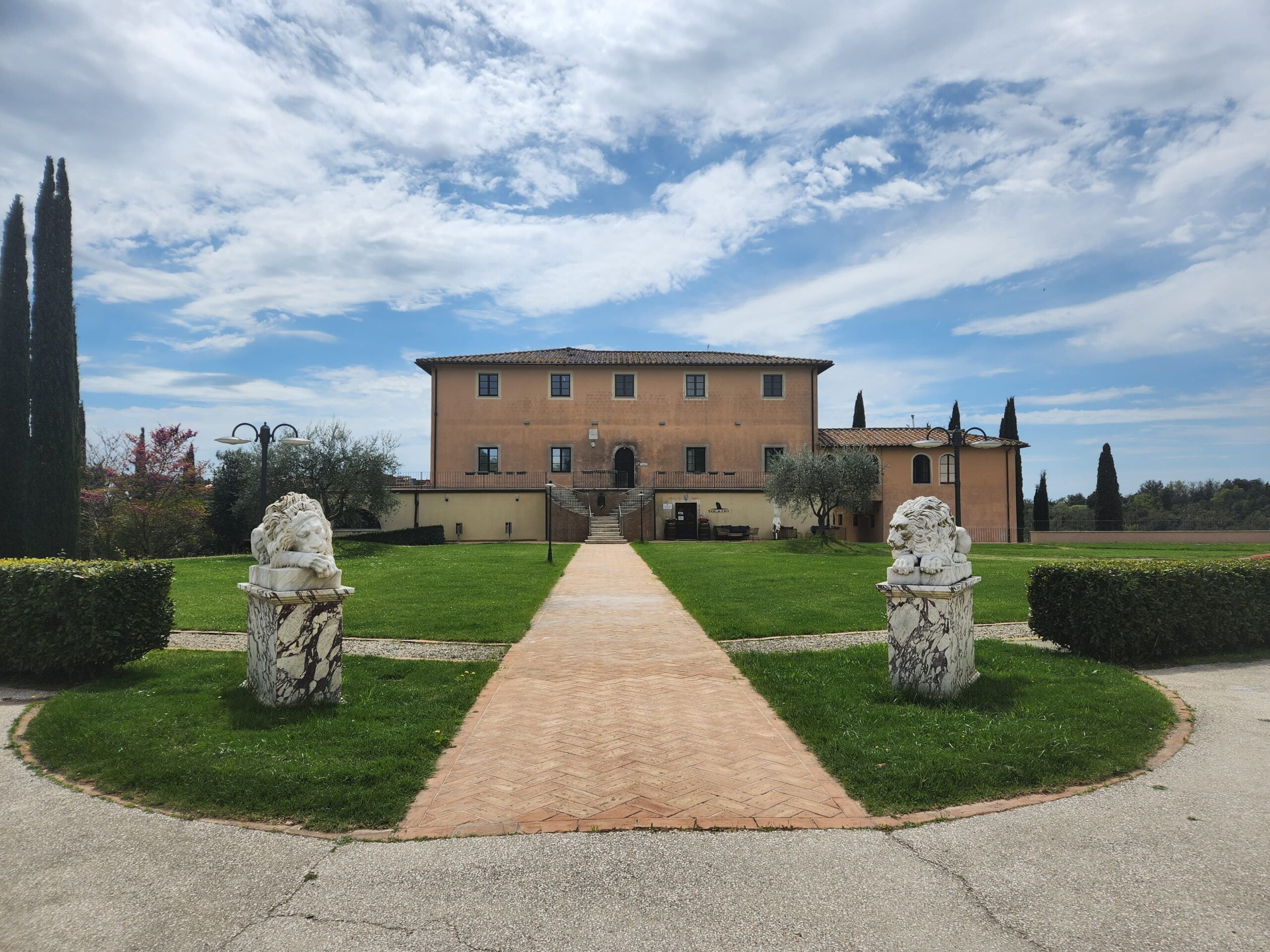
Tolaini is a winery located in the heart of Tuscany, renowned for producing high-quality wines that reflect the region’s rich winemaking traditions. Situated in the Chianti Classico region, the estate’s vineyards benefit from the favorable terroir of the area.
Tolaini Estate is a small family-owned modern winery that practices sustainable farming to respect the environment and the biodiversity of the land.
Its founder, Pier Luigi Tolaini, spent half of his life in the US working in the transportation and logistics industry before returning to Tuscany to reconnect with his roots and pursue winemaking. It took him four years to find a top Tuscan vineyard in the Chianti Classico region, where he discovered the perfect spot for his winery, combining a suitable climate, soil, and exposure.
Here are some notable wines produced by Tolaini Winery:
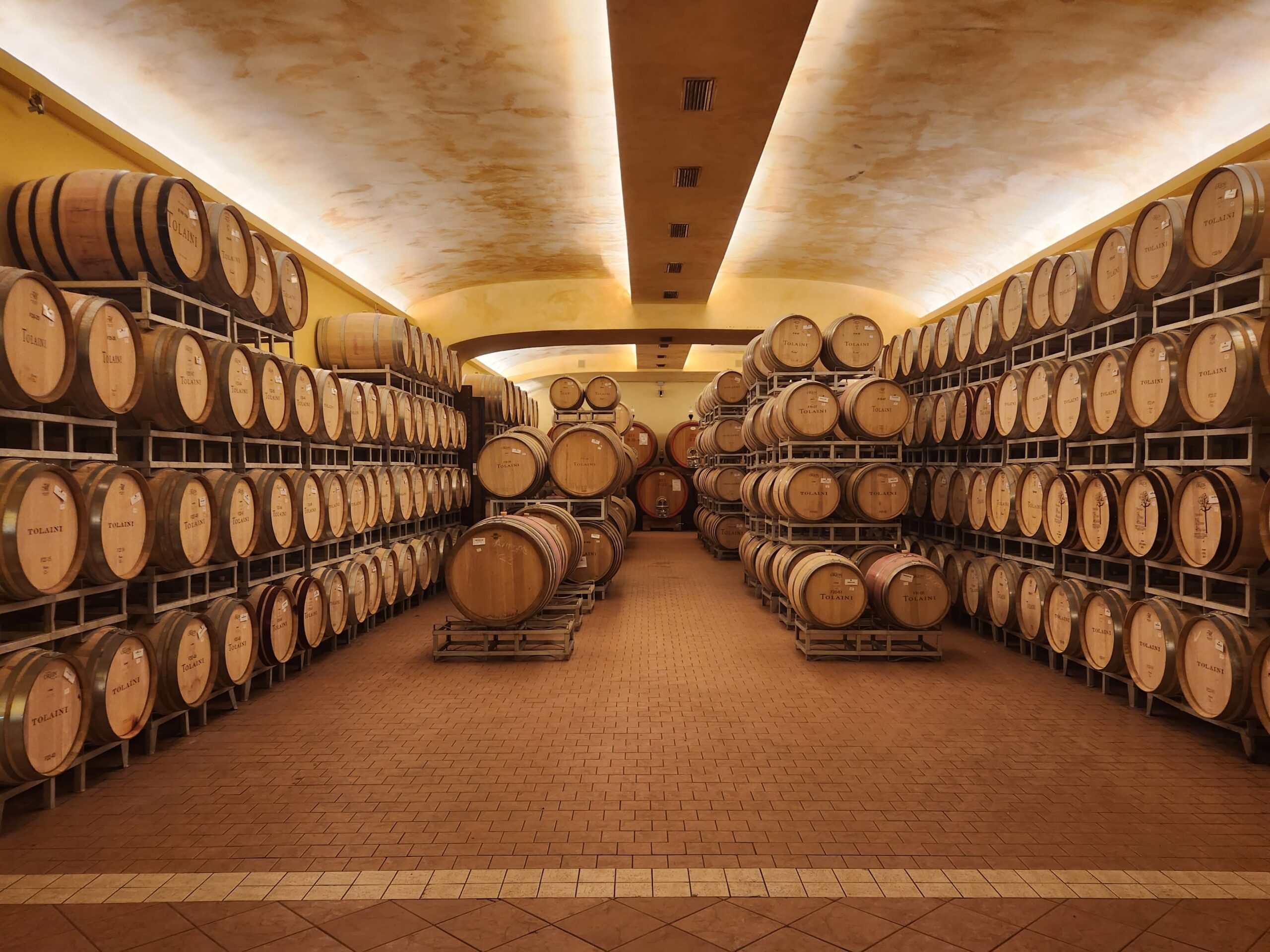
- Al Passo. It is a red blend that includes Sangiovese (85%) and Merlot (15%). This wine represents a modern and innovative approach, showcasing a harmonious blend of traditional Tuscan grape varieties.
- Vallenuova Chianti Classico. The Chianti Classico is a classic expression of the Sangiovese grape, the primary grape variety in Chianti wines. This wine is known for its bright acidity, red fruit flavors, and characteristic Tuscan earthiness.
- Chianti Classico Gran Selezione. A 100% Sangiovese, Chianti Classico Cru, this wine offers extraordinary complexity with a powerful aromatic signature and a palate of explosive cherry, tobacco, leather, licorice, and spice notes. It boasts a firm, balanced structure of tannin and acidity, making it a wine of both power and elegance.
- Picconero. This wine is produced only in the best vintages and only from the fruit of the best parcels of Merlot. The name derives from “picco” meaning peak and “nero” meaning black, in deference to the Italian custom of using the term “nero” for red-skinned grapes. This is a rich, complex, and muscular yet balanced wine with deep tiers of cherry, plums, and wild berries, along with nuances of spice and currants. Picconero is a cellar-worthy wine.
- Valdisanti. Valdisanti is another Super Tuscan produced by Tolaini. It is often a blend of Cabernet Sauvignon, with 20% Sangiovese and 5% Cabernet Franc. An elegant, structured, and full-bodied wine with rich dark berry fruit and cassis aromas, the lush fruit is framed by balanced oak.
- Tolaini Legit. This wine is a LEGIT Cabernet Sauvignon, with a true sense of place and an Italian soul. In pursuing the name LEGIT, only one person came to mind: an artist referred to as the “Genius of Modern Music” – Thelonious Monk. Thelonious Monk, one of the most LEGIT musicians of our time, was a perfect choice for this label. The photo is from Monk’s album cover, recorded at his concert in Milan in 1963.
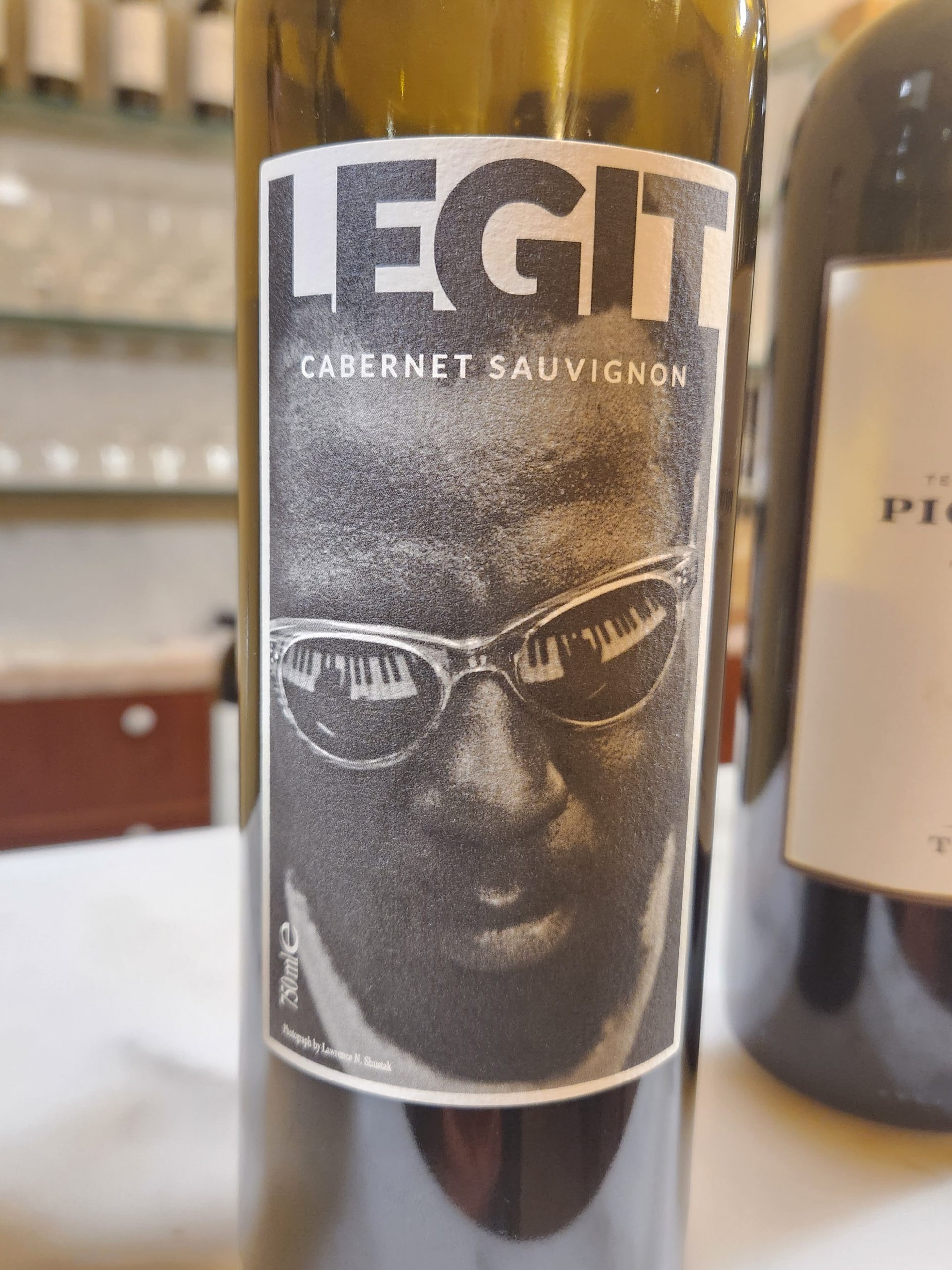
3. Fattoria Pomona
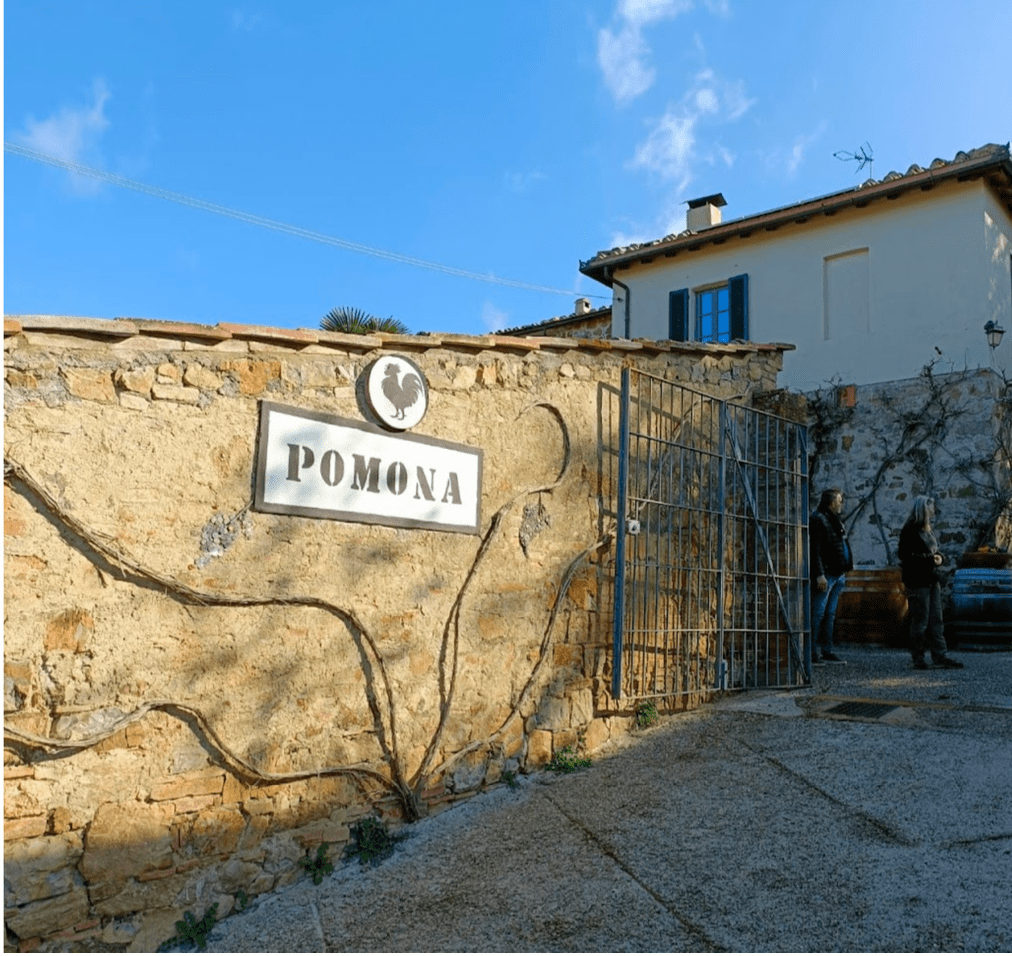
Another lovely small family-owned winery in Pomona, producing organic wines. Panoma is a small town near Castellina in Chianti, the most traditional part in the heart of the Chianti Classico region.
The winery was founded by the parents of Monica Raspi (current owner) in 1982. In 2007 Monica, a veterinarian by profession, decided to close her clinic, started studying Enology and got herself into winemaking.
Some of the Pomona Wines:
- Chianti Classico. 100% Sangiovese from Sant’Ilario and Vigna del Termine vineyards. A ruby red wine with the earthy notes, cherry, chocolate and tobacco.
- Chianti Classico Reserva. 100% Sangiovese. A red wine of medium acidity with the notes of spicy red fruits, oak and tobacco.
- Piero Rosso. 100% Sangiovese of the younger vines, vinified only in steel tanks. A light young red wine with the notes of red fruits and cherry
- Cabernet Sauvignon. 100% Cabernet Sauvignon. A foreigner in the Chianti area, chosen in the 1980s to cuddle the Sangiovese. This red wine is characterized by freshness, rich aromas, and excellent drinkability.
4. La Lastra Winery
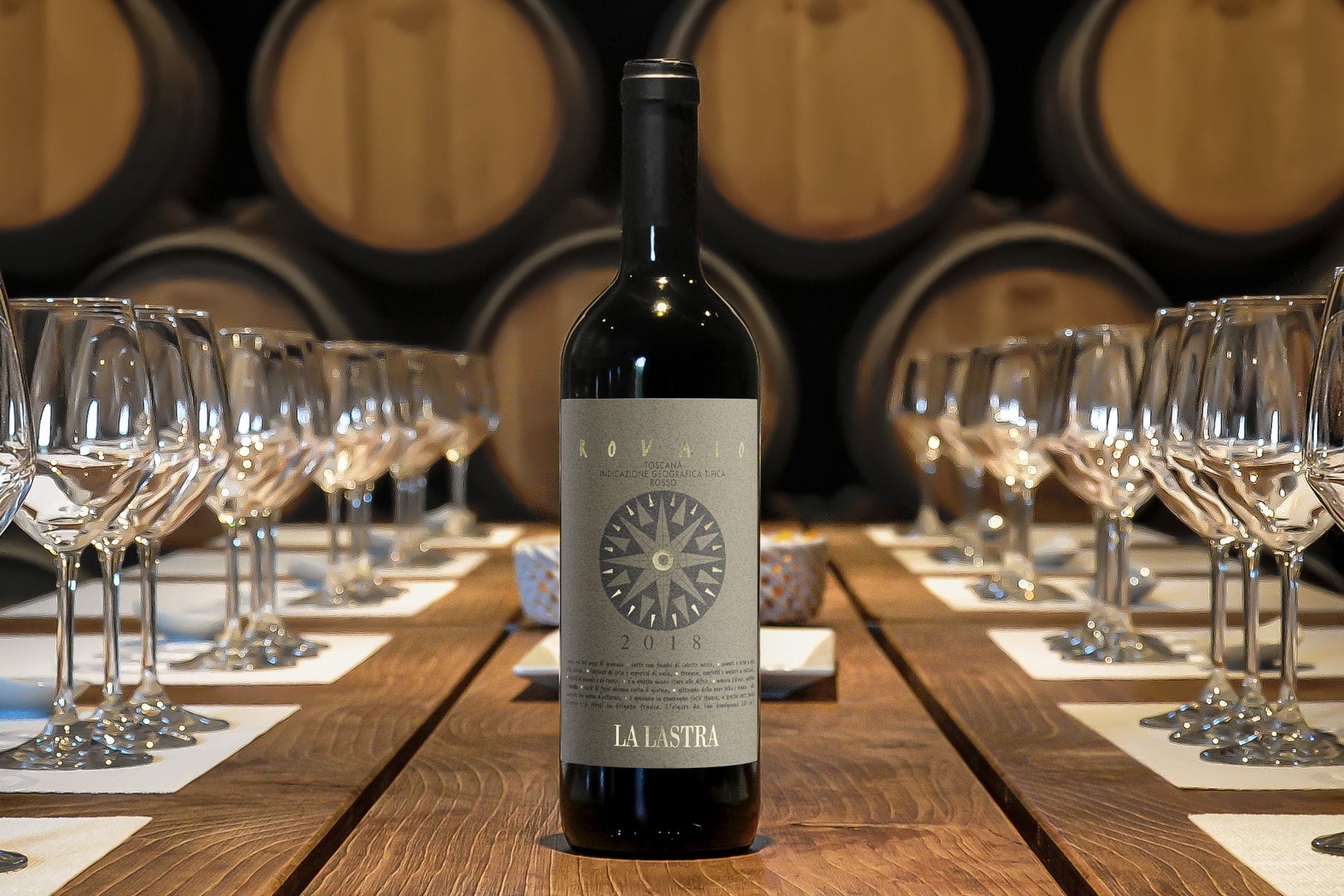
La Lastra began in the early eighties as a collaborative effort among family members, friends, and professionals in viticulture and oenology. From its inception, the winery embraced the ethos of sustainable winegrowing.
The primary objective has always been to craft high-quality, sustainable wines that authentically represent the Sienese territory. At the core of La Lastra’s principles are prioritizing the environment over business, valuing people above the brand, and emphasizing substance over form.
Some of the La Lastra Wines:
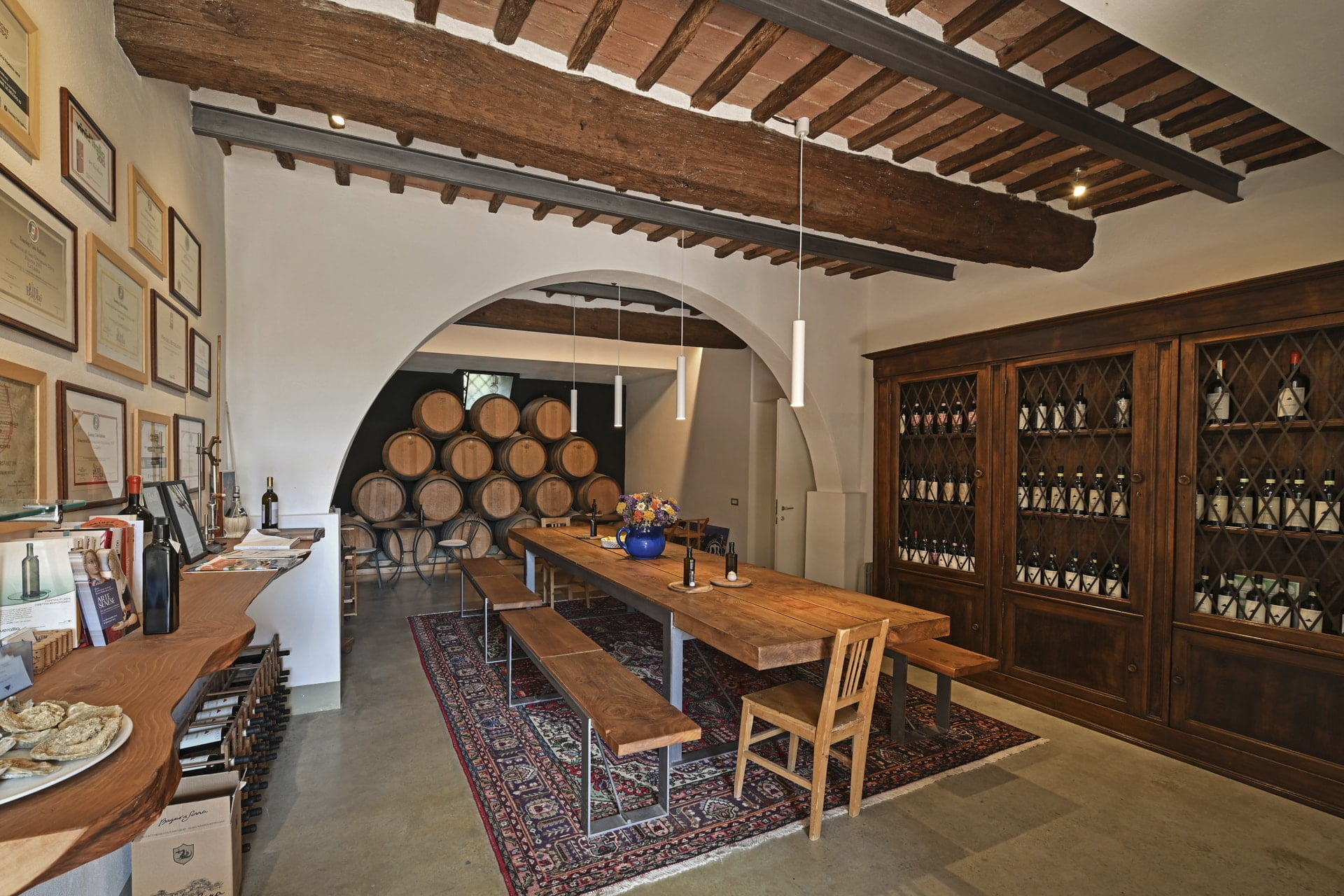
- Vernaccia di San Gimignano. 98% Vernaccia di San Gimignano, 2% Trebbiano Toscano and Malvasia Bianca Lunga del Chianti. A medium deep straw yellow white wine of a complex bouquet featuring floral, citrus, tropical and mineral notes.
- Vernaccia di San Gimignano Riserva. Same composition as the above wine with longer maturation period. A deep straw yellow white wine of complex bouquet featuring floral and citrus, tropical mineral and spicy notes.
- Chianti Colli Senesi. Sangiovese 95%, Canaiolo nero 3%, Malvasia bianca and Trebbiano 2%. A deep ruby red wine of medium complexity with hints of red fruits, flowers, spices and minerals.
- Rovaio. Sangiovese 34%, Cabernet Sauvignon 33%, Merlot 33%. A deep ruby red wine of a complex bouquet, pleasantly spicy, with hints of black cherry, forest berries, green pepper.
Transport and Moving Around
The best way to travel around the wineries in the Chianti Classico region is by car. You can choose Florence, Siena, or Arezzo as your base, as any of these cities would be suitable for exploring the region.
Summary
Siena serves an excellent point to explore the wineries in Chianti region.
Check out our travel guide to Siena!
Hey, guys, today we are going to talk about a wonderful city in Tuscany. I am going to walk you through the top places of Siena. We are offering a guide, which covers the major attractions of the city.
